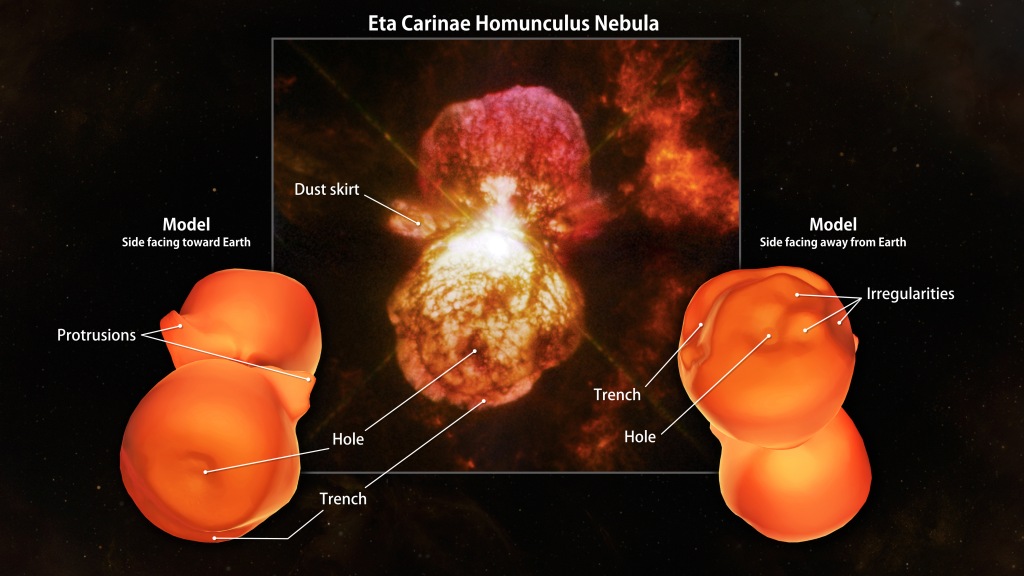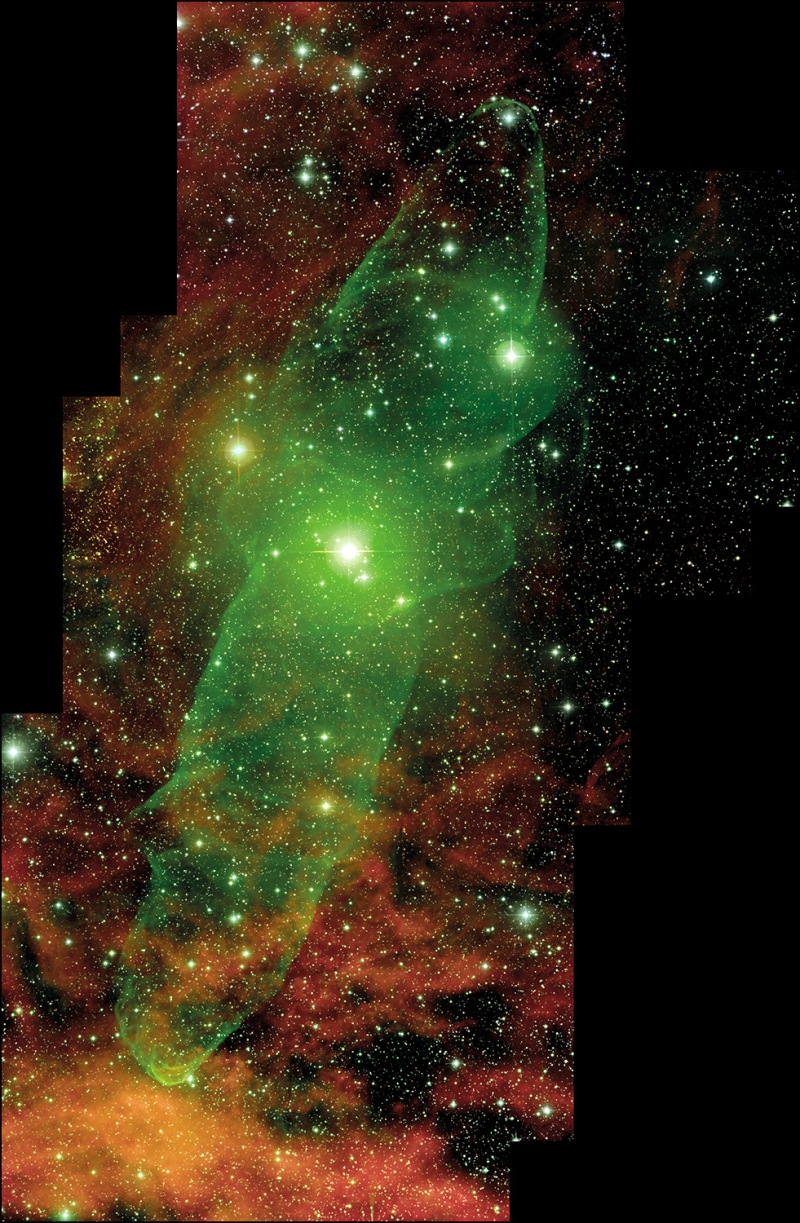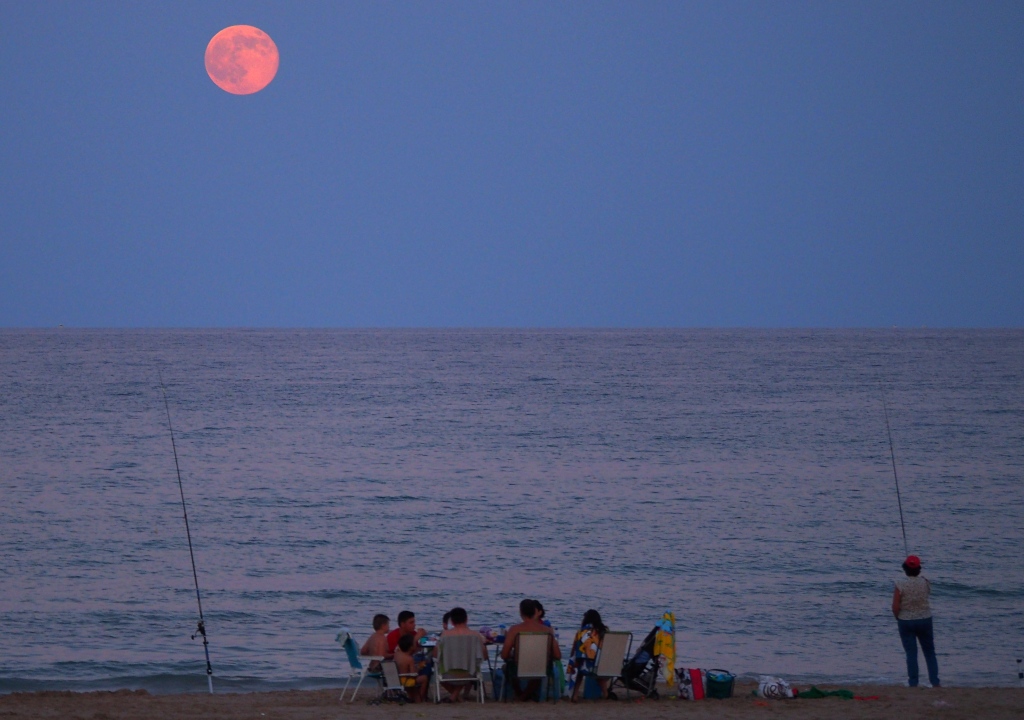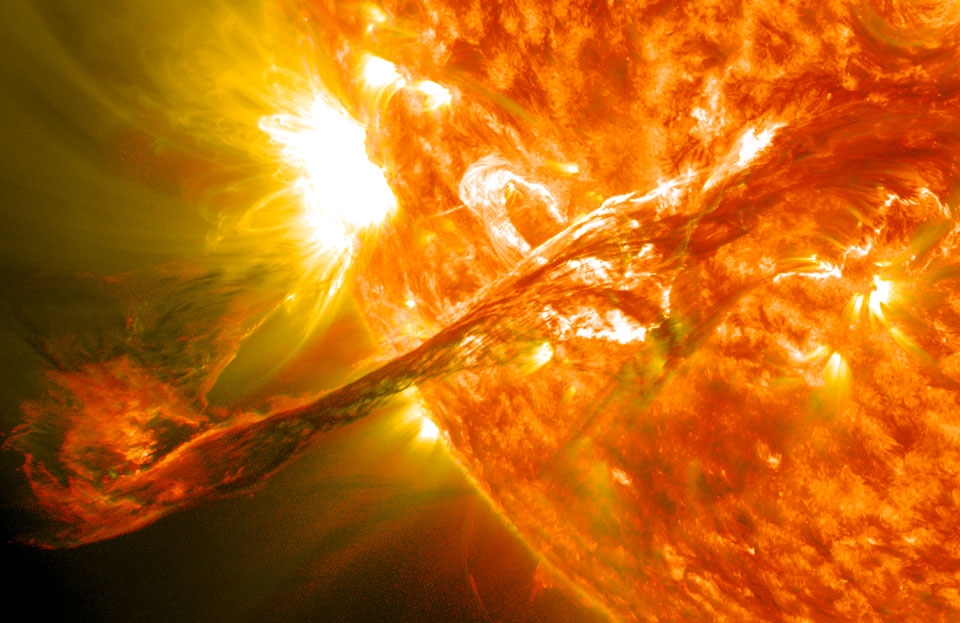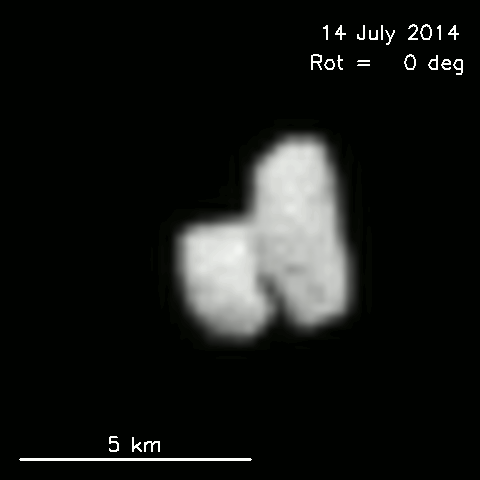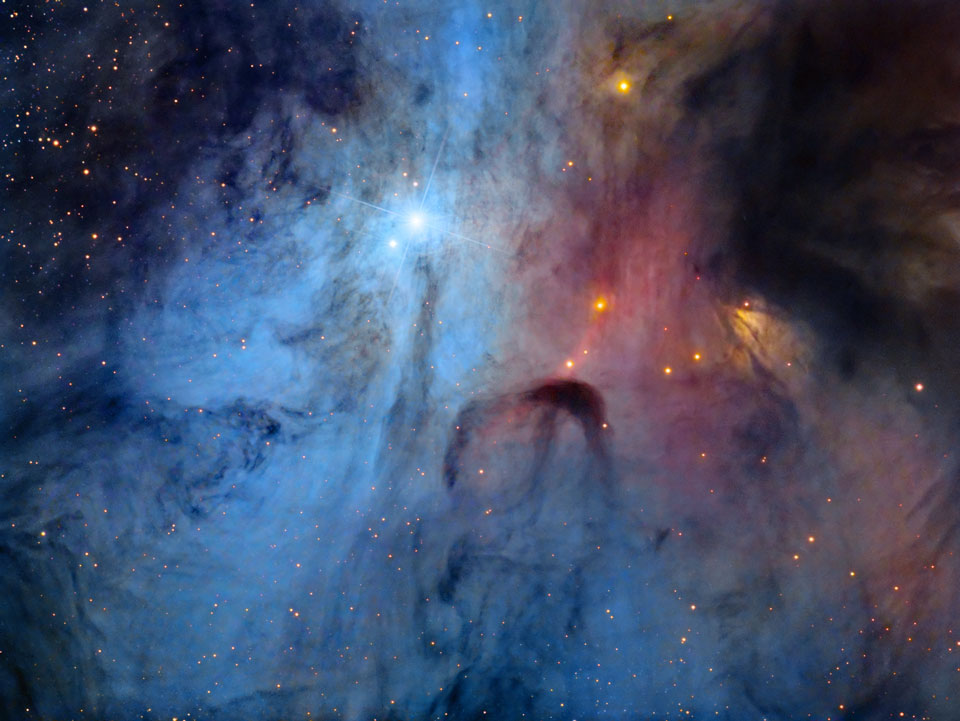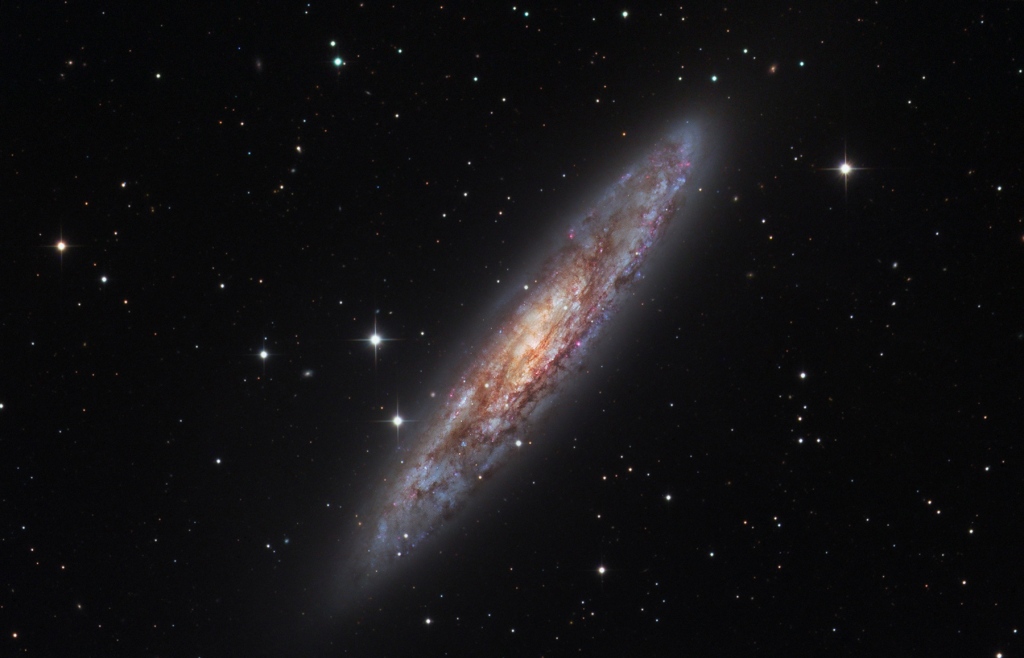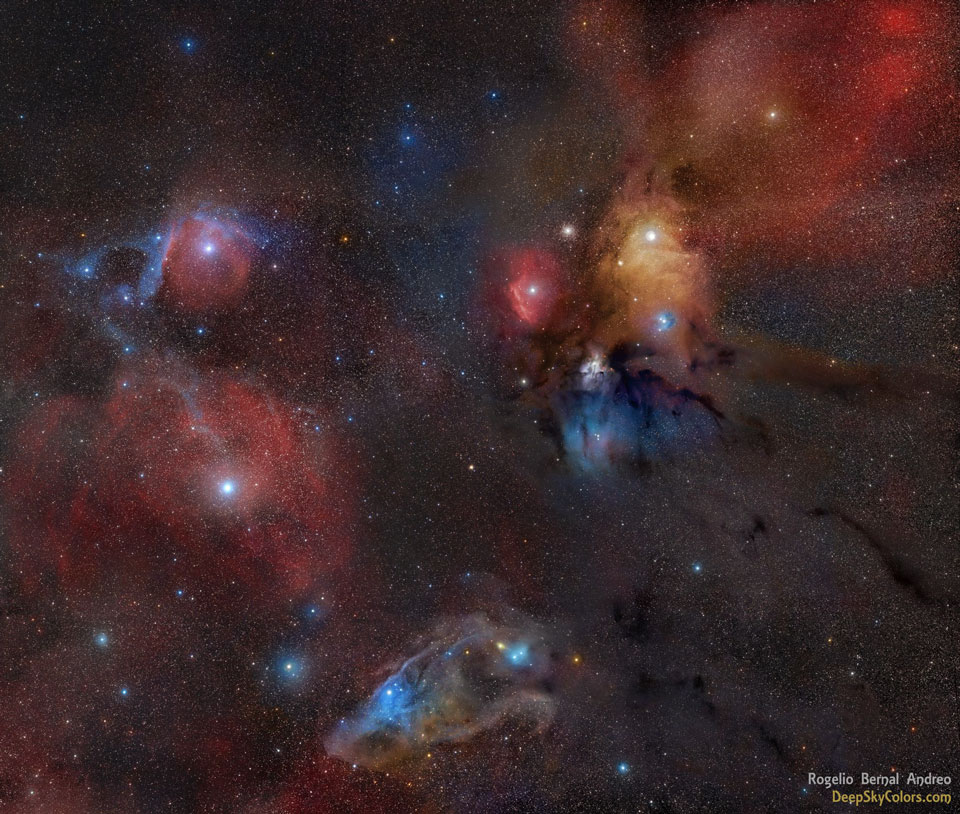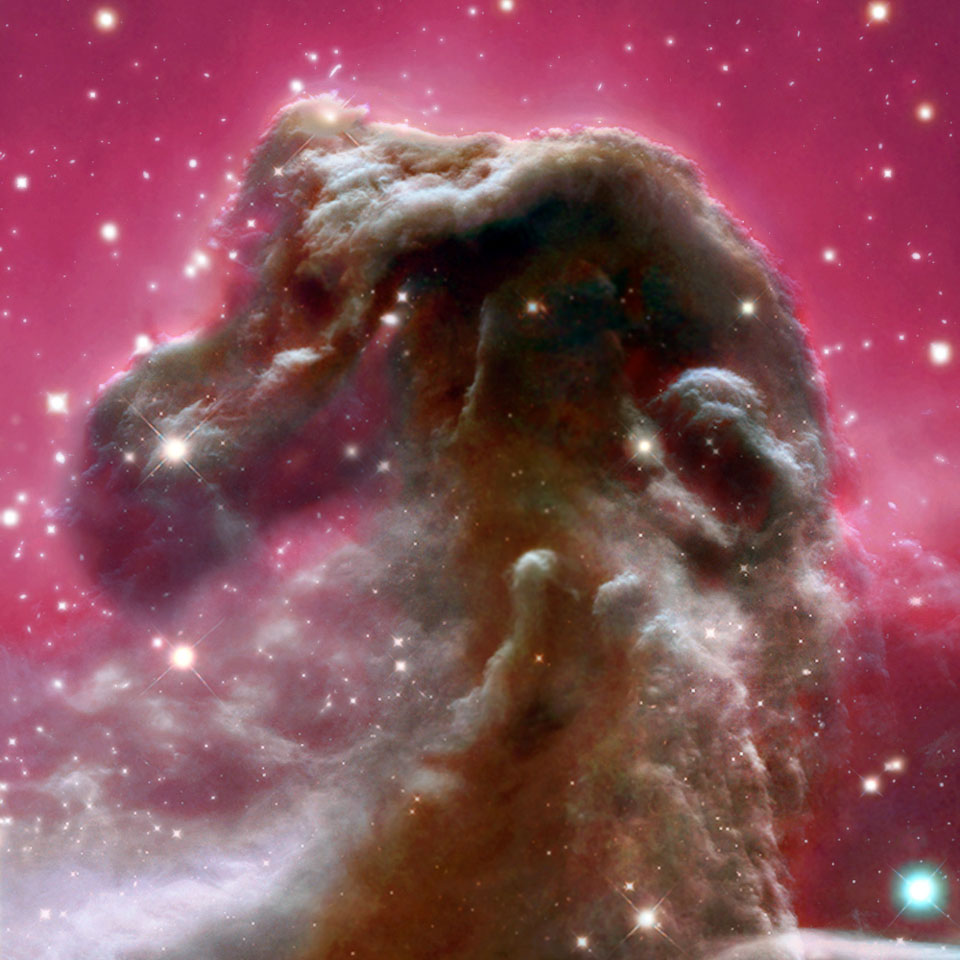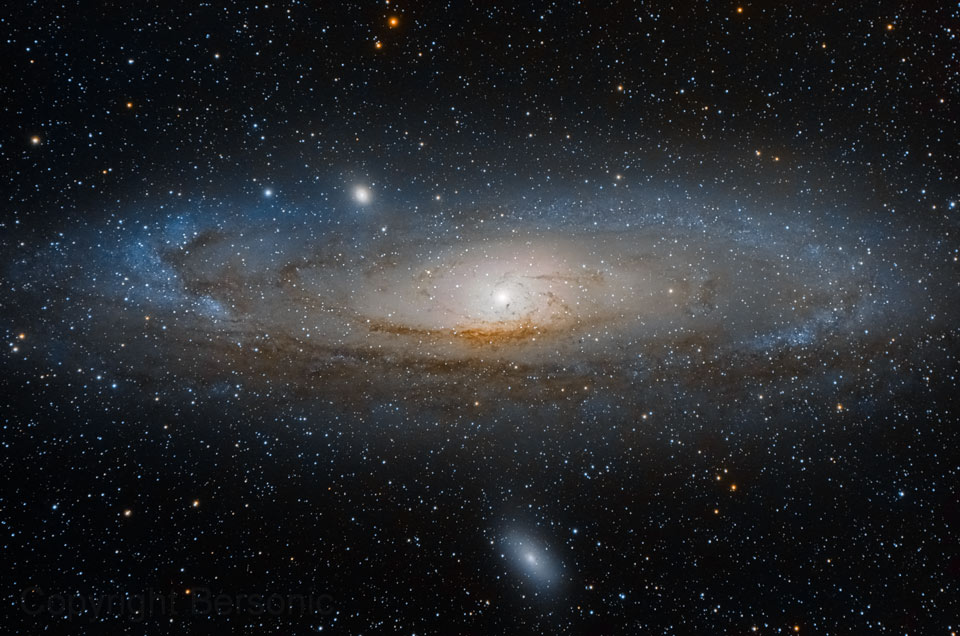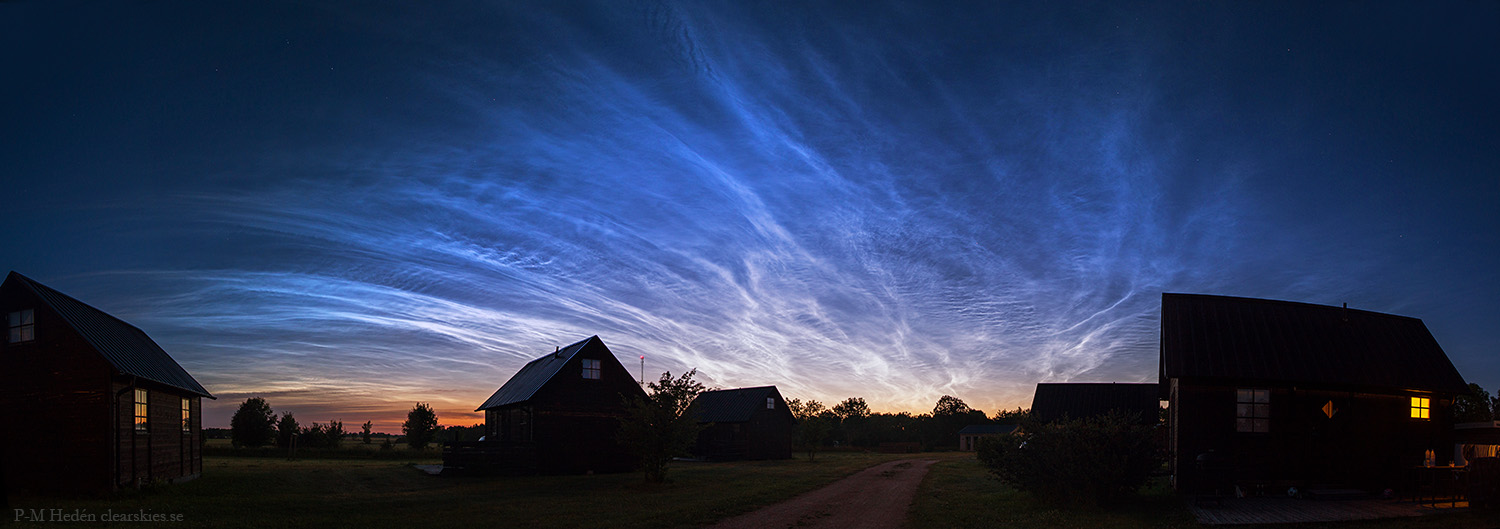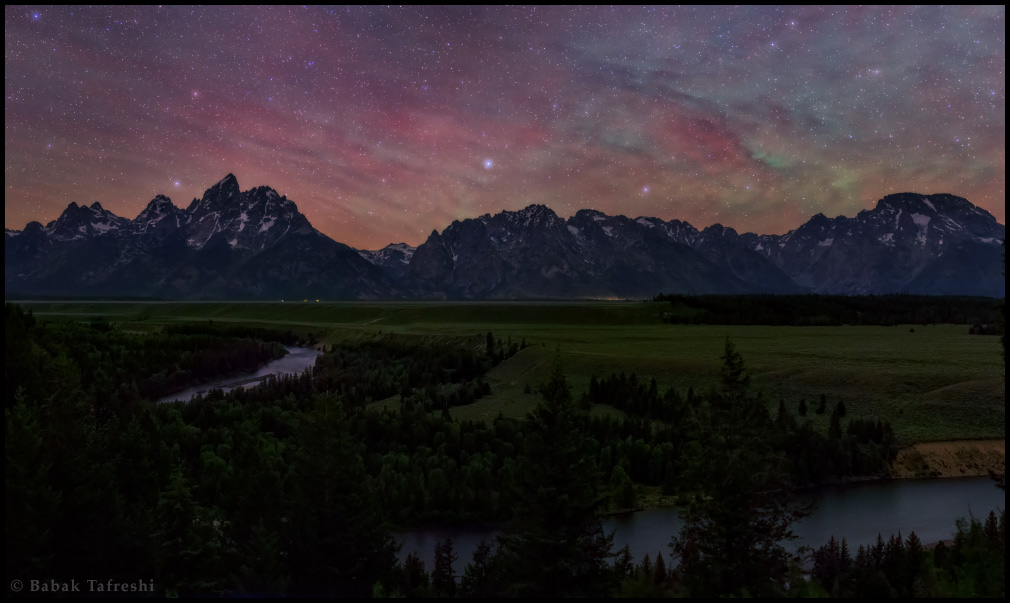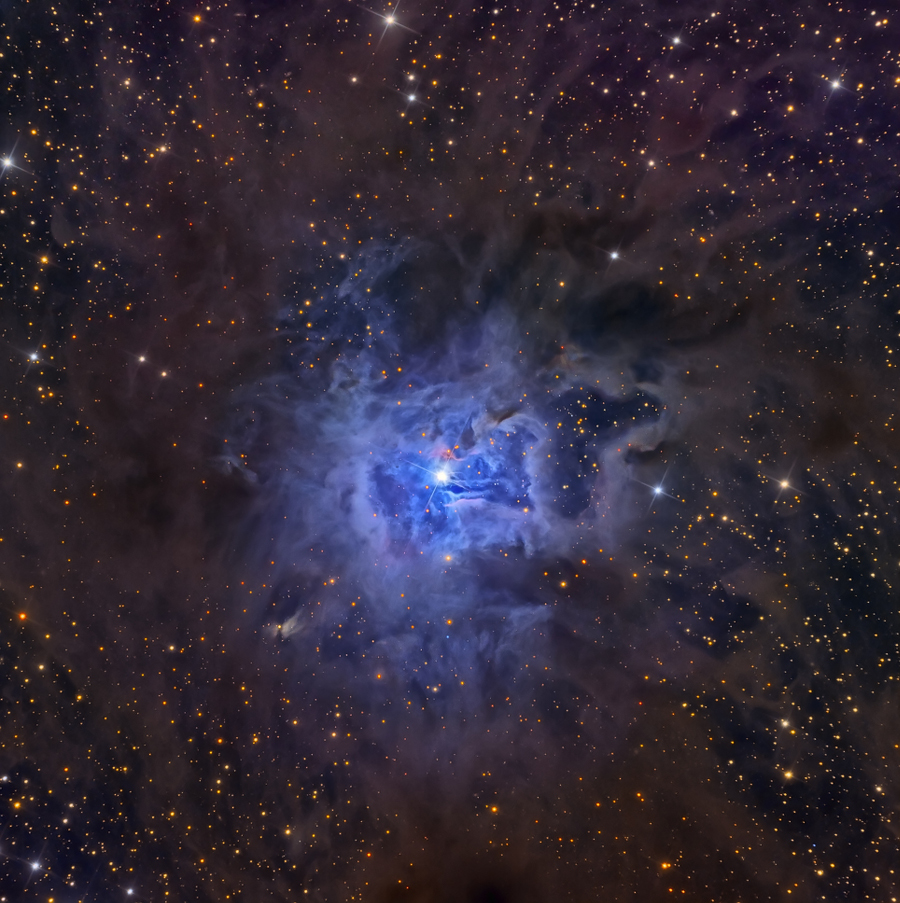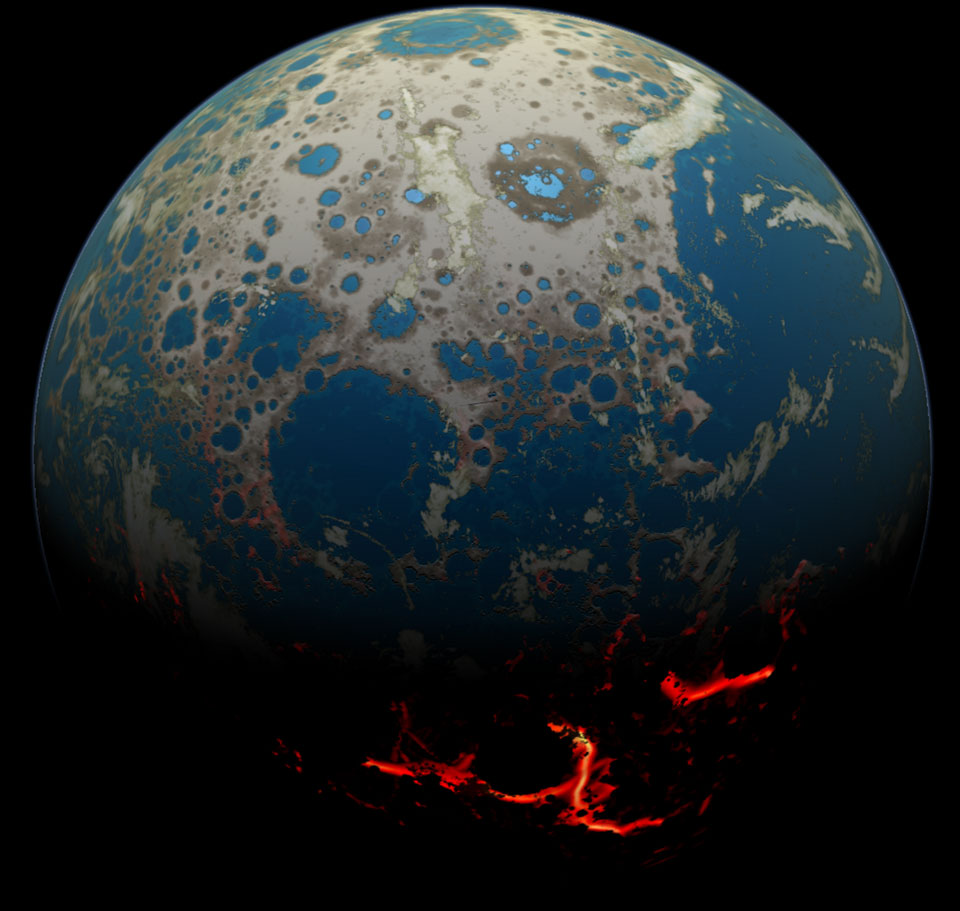
|
| Title: Astronomy Picture of the Day | |
| friendsoffortiesfive > General > General Discussion | Go to subcategory: |
| Author | Content |
|
Niceguy2
|
|
|
Date Posted:03/06/2014 11:29 PMCopy HTML I really love this site and |
|
|
Niceguy2
|
#201 |
|
Re:Astronomy Picture of the Day Date Posted:07/18/2014 12:05 AMCopy HTML Science Credit: W. Steffen (UNAM), M. Teodoro, T.I. Madura, J.H. Groh, T.R. Gull, A. Mehner, M.F. Corcoran, A. Damineli, K. Hamaguchi Image Credit: NASA, Goddard Space Flight Center/SVS - Inset: NASA, ESA, Hubble SM4 ERO Team Explanation: If you're looking for something to print with that new 3D printer, try out a copy of the Homunculus Nebula. The dusty, bipolar cosmic cloud is around 1 light-year across but is slightly scaled down for printing to about 1/4 light-nanosecond or 80 millimeters. The full scale Homunculus surrounds Eta Carinae, famously unstable massive stars in a binary system embedded in the extensive Carina Nebula about 7,500 light-years distant. Between 1838 and 1845, Eta Carinae underwent the Great Eruption becoming the second brightest star in planet Earth's night sky and ejecting the Homunculus Nebula.The new 3D model of the still expanding Homunculus was created by exploring the nebula with the European Southern Observatory's VLT/ |
|
|
Niceguy2
|
#202 |
|
Re:Astronomy Picture of the Day Date Posted:07/18/2014 9:05 PMCopy HTML Image Credit: Romano Corradi (IAC), Nicolas Grosso, Agnès Acker, Robert Greimel, Patrick Guillout Explanation: A mysterious, squid-like apparition, this nebula is very faint, but also very large in planet Earth's sky. In the mosaic image, composed with narrowband data from the 2.5 meter Isaac Newton Telescope, it spans some 2.5 full moons toward the constellation Cepheus. Recently discovered by French astro-imager Nicolas Outters, the remarkable nebula's bipolar shape and emission are consistent with it being a planetary nebula, the gaseous shroud of a dying sun-like star, but its actual distance and origin are unknown. A new investigation suggests Ou4 really lies within the emission region SH2-129some 2,300 light-years away. Consistent with that scenario, the cosmic squid would represent a spectacular outflow of material driven by a triple system of hot, massive stars, cataloged as HR8119, seen near the center of the nebula. If so, this truly giant squid nebula would physically be nearly 50 light-years across. |
|
|
Niceguy2
|
#203 |
|
Re:Astronomy Picture of the Day Date Posted:07/19/2014 6:58 PMCopy HTML Image Credit & Copyright: José Carlos González Explanation: In this beach and skyscape from Alicante, Spain, July's Full Moon shines in the dark blue twilight, its reflection coloring the Mediterranean waters. Near the horizon, the moonlight is reddened by its long path through the atmosphere, but this Full Moon was also near perigee, the closest point to Earth along the Moon's elliptical orbit. That made it a Supermoon, a mighty 14% larger and 30% brighter than a Full Moon at apogee, the Moon's farthest orbital swing. Of course, most warm summer nights are a good time to enjoy a family meal oceanside, but what fish do you catch on the night of a Supermoon? They must be Moon breams ... |
|
|
tamarafromTX
|
#204 |
|
Re:Astronomy Picture of the Day Date Posted:07/20/2014 12:10 AMCopy HTML
|
|
|
Niceguy2
|
#205 |
|
Re:Astronomy Picture of the Day Date Posted:07/20/2014 7:58 PMCopy HTML LOL, Pam, ya nut. I like it.

|
|
|
Niceguy2
|
#206 |
|
Re:Astronomy Picture of the Day Date Posted:07/20/2014 8:01 PMCopy HTML Image Credit: NASA's GSFC, SDO AIA Team Explanation: What's happened to our Sun? Nothing very unusual -- it just threw a filament. Toward the middle of 2012, a long standing solar filament suddenly erupted into space producing an energetic Coronal Mass Ejection (CME). The filament had been held up for days by the Sun's ever changing magnetic field and the timing of the eruption was unexpected. Watched closely by the Sun-orbiting Solar Dynamics Observatory, the resulting explosion shot electrons and ions into the Solar System, some of which arrived at Earth three days later and impacted Earth's magnetosphere, causing visible aurorae. Loops of plasma surrounding an active region can be seen above the erupting filament in the ultraviolet image. Over the past week the number of sunspots visible on the Sun unexpectedly dropped to zero, causing speculation that the Sun has now passed a very unusual solar maximum, the time in the Sun's 11-year cycle when it is most active. |
|
|
tamarafromTX
|
#207 |
|
Re:Astronomy Picture of the Day Date Posted:07/20/2014 8:31 PMCopy HTML Reply to Niceguy2 (07/20/2014 2:58 PM) LOL, Pam, ya nut. I like it. 
|
|
|
Niceguy2
|
#208 |
|
Re:Astronomy Picture of the Day Date Posted:07/21/2014 9:55 PMCopy HTML Image Credit: ESA/Rosetta/MPS for OSIRIS Team; MPS/UPD/LAM/IAA/SSO/INTA/UPM/DASP/IDA Explanation: Why does this comet's nucleus have two components? The surprising discovery that Comet 67P/Churyumov–Gerasimenko has a double nucleus came late last week as ESA's robotic interplanetary spacecraft Rosetta continued its approach toward the ancient comet's core. Speculative ideas on how the double core was created include, currently, that Comet Churyumov–Gerasimenko is actually the result of the merger of two comets, that the comet is a loose pile of rubble pulled apart by tidal forces, that ice evaporation on the comet has been asymmetric, or that the comet has undergone some sort of explosive event. Pictured above, the comet's unusual 5-km sized comet nucleus is seen rotating over the course of a few hours, with each frame taken 20-minutes apart. Better images -- and hopefully more refined theories -- are expected as Rosetta is on track to enter orbit around Comet Churyumov–Gerasimenko's nucleus early next month, and by the end of the year, if possible, land a probeon it. |
|
|
tamarafromTX
|
#209 |
|
Re:Astronomy Picture of the Day Date Posted:07/22/2014 6:05 PMCopy HTML
|
|
|
Niceguy2
|
#210 |
|
Re:Astronomy Picture of the Day Date Posted:07/23/2014 2:00 AMCopy HTML Image Credit & Copyright: Ingólfur Bjargmundsson Explanation: Yes, but have you ever seen aurora from a cave? To capture this fascinating juxtaposition between below and above, astrophotographer Bjargmundsson spent much of a night alone in the kilometer-long Raufarhólshellir lava cave in Iceland during late March. There, he took separate images of three parts of the cave using a strobe for illumination. He also took a deep image of the sky to capturefaint aurora, and digitally combined the four images later. The 4600-year old lava tube has several skylights under which stone rubble and snow have accumulated. Oh -- the person standing on each mound -- it's the artist. |
|
|
Niceguy2
|
#211 |
|
Re:Astronomy Picture of the Day Date Posted:07/24/2014 3:12 AMCopy HTML Image Credit & Copyright: Rolf Olsen Explanation: Why does this starfield photograph resemble an impressionistic painting? The effect is created not by digital trickery but by large amounts of interstellar dust. Dust, minute globs rich in carbonand similar in size to cigarette smoke, frequently starts in the outer atmospheres of large, cool, evolved stars. The dust is dispersed as the star dies and grows as things stick to it in the interstellar medium. Dense dust clouds are opaque to visible light and can completely hide background stars. For less dense clouds, the capacity of dust to preferentially reflect blue starlight becomes important, effectively blooming the stars blue light out and marking the surrounding dust. Nebular gas emissions, typically brightest in red light, can combine to form areas seemingly created on an artist's canvas. Photographed above is the central part of the nebula IC 4603 surrounding the bright star SAO 184376 (actually 8th magnitude) which mostly illuminates the blue reflection nebula. IC 4603 can be seen near the very bright star Antares (1st magnitude) toward the constellation of Ophiuchus. |
|
|
Niceguy2
|
#212 |
|
Re:Astronomy Picture of the Day Date Posted:07/25/2014 1:31 AMCopy HTML Image Credit & Copyright: Yuri Beletsky (Las Campanas Observatory, Carnegie Institution) Explanation: This alluring all-skyscape was taken 5,100 meters above sea level, from the Chajnantor Plateau in the Chilean Andes. Viewed through the site's rarefied atmosphere at about 50% sea level pressure, the gorgeous Milky Way stretches through the scene. Its cosmic rifts of dust, stars, and nebulae are joined by Venus, a brilliant morning star immersed in a strong band of predawn Zodiacal light. Still not completely dark even at this high altitude, the night sky's greenish cast is due to airglow emission from oxygen atoms. Around the horizon the dish antenna units of the Atacama Large Millimeter/submillimeter Array, ALMA, explore the universe at wavelengths over 1,000 times longer than visible light. |
|
|
Niceguy2
|
#213 |
|
Re:Astronomy Picture of the Day Date Posted:07/25/2014 10:11 PMCopy HTML Image Credit: NASA, Chandra X-ray Observatory, SAO, DSS Explanation: The Crab Pulsar, a city-sized, magnetized neutron star spinning 30 times a second, lies at the center of this tantalizing wide-field image of the Crab Nebula. A spectacular picture of one of our Milky Way's supernova remnants, it combines optical survey data with X-ray data from the orbiting Chandra Observatory. The composite was created as part of a celebration of Chandra's 15 year long exploration of the high energy cosmos. Like a cosmic dynamo the pulsar powers the X-ray and optical emission from the nebula, accelerating charged particles to extreme energies to produce the jets and rings glowing in X-rays. The innermost ring structure is about a light-year across. With more mass than the Sun and the density of an atomic nucleus, the spinning pulsar is the collapsed core of the massive star that exploded, while the nebula is the expanding remnant of the star's outer layers. The supernova explosion was witnessed in the year 1054. |
|
|
Niceguy2
|
#214 |
|
Re:Astronomy Picture of the Day Date Posted:07/27/2014 2:56 AMCopy HTML Image Credit & Copyright: László Francsics Explanation: Shiny NGC 253 is one of the brightest spiral galaxies visible, and also one of the dustiest. Some call it the Silver Dollar Galaxy for its appearance in small telescopes, or just the Sculptor Galaxy for its location within the boundaries of the southern constellation Sculptor. First swept up in 1783 by mathematician and astronomer Caroline Herschel, the dusty island universe lies a mere 10 million light-years away. About 70 thousand light-years across, NGC 253 is the largest member of the Sculptor Group of Galaxies, the nearest to our own Local Group of Galaxies. In addition to its spiral dust lanes, tendrils of dust seem to be rising from a galactic disk laced with young star clusters and star forming regions in this sharp color image. The high dust content accompanies frantic star formation, earning NGC 253 the designation of a starburst galaxy. NGC 253 is also known to be a strong source of high-energy x-rays and gamma rays, likely due to massives black hole near the galaxy's center. |
|
|
Niceguy2
|
#215 |
|
Re:Astronomy Picture of the Day Date Posted:07/27/2014 10:56 PMCopy HTML Image Credit & Copyright: Rogelio Bernal Andreo Explanation: The clouds surrounding the star system Rho Ophiuchi compose one of the closest star forming regions. Rho Ophiuchi itself is a binary star system visible in the light-colored region on the image right. The star system, located only 400 light years away, is distinguished by its colorful surroundings, which include a red emission nebula and numerous light and dark brown dust lanes. Near the upper right of the Rho Ophiuchi molecular cloud system is the yellow star Antares, while a distant but coincidently-superposed globular cluster of stars, M4, is visible between Antares and the red emission nebula. Near the image bottom lies IC 4592, the Blue Horsehead nebula. The blue glow that surrounds the Blue Horsehead's eye -- and other stars around the image -- is a reflection nebula composed of fine dust. On theabove image left is a geometrically angled reflection nebula cataloged as Sharpless 1. Here, the bright star near the dust vortex creates the light of surrounding reflection nebula. Although most of these featuresare visible through a small telescope pointed toward the constellations of Ophiuchus, Scorpius, and Sagittarius, the only way to see the intricate details of the dust swirls, as featured above, is to use a long exposure camera. |
|
|
Niceguy2
|
#216 |
|
Re:Astronomy Picture of the Day Date Posted:07/28/2014 11:41 PMCopy HTML Image Credit & Copyright: Optical: Aldo Mottino & Carlos Colazo, OAC, Córdoba; Infrared: Hubble Legacy Archive Explanation: One of the most identifiable nebulae in the sky, the Horsehead Nebula in Orion, is part of a large, dark, molecular cloud. Also known as Barnard 33, the unusual shape was first discovered on aphotographic plate in the late 1800s. The red glow originates from hydrogen gas predominantly behind the nebula, ionized by the nearby bright star Sigma Orionis. The darkness of the Horsehead is caused mostly by thick dust, although the lower part of the Horsehead's neck casts a shadow to the left. Streams of gas leaving the nebula are funneled by a strong magnetic field. Bright spots in the Horsehead Nebula's base are young stars just in the process of forming. Light takes about 1,500 years to reach us from the Horsehead Nebula. The above image is a digital combination of images taken in blue, green, red, and hydrogen-alpha light from the Argentina, and an image taken in infrared light by the orbiting Hubble Space Telescope. |
|
|
Niceguy2
|
#217 |
|
Re:Astronomy Picture of the Day Date Posted:07/30/2014 1:39 AMCopy HTML Image Credit & Copyright: Petr Horálek Explanation: To some, it may look like a portal into the distant universe. To others, it may appear as the eye of a giant. Given poetic license, both are correct. Pictured above is a standard fisheye view of thesky -- but with an unusual projection. The view is from a perch in New Zealand called Te Mata Peak, a name that translates from the Maori language as "Sleeping Giant". The wondrous panorama shows theband of our Milky Way Galaxy right down the center of the sky, with the Large and Small Magellanic Clouds visible to the right. The red hue is atmospheric airglow that surprised the photographer as it was better captured by the camera than the eye. The above image was taken two weeks ago as the photographer's sister, on the left, and an acquaintance peered into the sky portal. |
|
|
tamarafromTX
|
#218 |
|
Re:Astronomy Picture of the Day Date Posted:07/30/2014 2:37 AMCopy HTML  |
|
|
Niceguy2
|
#219 |
|
Re:Astronomy Picture of the Day Date Posted:07/31/2014 12:52 AMCopy HTML Image Credit & Copyright: Jacob Bers (Bersonic) Explanation: Andromeda is the nearest major galaxy to our own Milky Way Galaxy. Our Galaxy is thought to look much like Andromeda. Together these two galaxies dominate the Local Group of galaxies. The diffuse light from Andromeda is caused by the hundreds of billions of stars that compose it. The several distinct stars that surround Andromeda's image are actually stars in our Galaxy that are well in front of the background object. Andromeda is frequently referred to as M31 since it is the 31st object on Messier's list of diffuse sky objects. M31 is so distant it takes about two million years for light to reach us from there. Although visible without aid, the above image of M31 was taken with a standard camera through a small telescope. Much about M31 remains unknown, including how it acquired its unusual double-peaked center. |
|
|
Niceguy2
|
#220 |
|
Re:Astronomy Picture of the Day Date Posted:08/01/2014 4:41 AMCopy HTML Image Credit & Copyright: P-M Hedén (Clear Skies, TWAN) Explanation: Transfusing sunlight through a still dark sky, this exceptional display of noctilucent clouds was captured earlier this month above the island of Gotland, Sweden. From the edge of space, about 80 kilometers above Earth's surface, the icy clouds reflect sunlight even though the Sun itself is below the horizon as seen from the ground. Usually spotted at high latitudes in summer months the night shining clouds made a strong showing this July. Also known as polar mesopheric clouds they are understood to form as water vapor driven into the cold upper atmosphere condenses on the fine dust particles supplied by disintegrating meteors or volcanic ash. NASA's AIM mission provides daily projections of noctilucent clouds as seen from space. |
|
|
Niceguy2
|
#221 |
|
Re:Astronomy Picture of the Day Date Posted:08/01/2014 4:42 AMCopy HTML Image Credit & Copyright: Babak Tafreshi (TWAN) Explanation: An alluring night skyscape, this scene looks west across the Grand Teton National Park, Wyoming, USA, Planet Earth. The Snake River glides through the foreground, while above the Tetons' rugged mountain peaks the starry sky is laced with exceptionally strong red and green airglow. That night, the luminous atmospheric glow was just faintly visible to the eye, its color and wavey structure captured only by a sensitive digital camera. In fact, this contemporary digital photograph matches the location and perspective of a well-known photograph from 1942 - The Tetons and The Snake River , byAnsel Adams, renown photographer of the American West. Adams' image is one of 115 images stored on the Voyager Golden Record. Humanity's message in a bottle, golden records were onboard both Voyager 1 and Voyager 2 spacecraft, launched in 1977 and now headed toward interstellar space. |
|
|
Niceguy2
|
#222 |
|
Re:Astronomy Picture of the Day Date Posted:08/04/2014 9:25 PMCopy HTML Image Credit & Copyright: Jimmy Walker Explanation: These clouds of interstellar dust and gas have blossomed 1,300 light-years away in the fertile star fields of the constellation Cepheus. Sometimes called the Iris Nebula, NGC 7023 is not the only nebula in the sky to evoke the imagery of flowers, though. Still, this deep telescopic view shows off the Iris Nebula's range of colors and symmetries in impressive detail. Within the Iris, dusty nebular material surrounds a hot, young star. The dominant color of the brighter reflection nebula is blue, characteristic of dust grains reflecting starlight. Central filaments of the dusty clouds glow with a faint reddish photoluminesence as some dust grains effectively convert the star's invisible ultraviolet radiation to visible red light. Infrared observations indicate that this nebula may contain complex carbon molecules known as PAHs. The pretty blue petals of the Iris Nebula span about six light-years. |
|
|
Niceguy2
|
#223 |
|
Re:Astronomy Picture of the Day Date Posted:08/04/2014 9:28 PMCopy HTML Image Credit: Space Station Expedition 22 Crew, NASA Explanation: What's that approaching? Astronauts on board the International Space Station first saw it in early 2010 far in the distance. Soon it enlarged to become a dark silhouette. As it came even closer, the silhouette appeared to be a spaceship. Finally, the object revealed itself to be the Space Shuttle Endeavour, and it soon docked as expected with the Earth-orbiting space station. Pictured above, Endeavour was imaged near Earth's horizon as it approached, where several layers of the Earth's atmosphere were visible. Directly behind the shuttle is the mesosphere, which appears blue. The atmospheric layer that appears white is the stratosphere, while the orange layer is Earth's Troposphere. This shuttle mission, began with a dramatic night launch. Tasks completed during this shuttle's visit to the ISS included the delivery of the Tranquility Module which contained a cupola bay window complex that allows even better views of spaceships approaching and leaving the space station. |
|
|
Niceguy2
|
#224 |
|
Re:Astronomy Picture of the Day Date Posted:08/04/2014 9:32 PMCopy HTML Image Credit: Cassini Imaging Team, SSI, JPL, ESA, NASA Explanation: Why does Enceladus have ice plumes? The discovery of jets spewing water vapor and ice was detected by the Saturn-orbiting Cassini spacecraft in 2005. The origin of the water feeding the jets, however, remained a topic of research. A leading hypothesis held that the source might originate from a deep underground sea, but another hypothesis indicated that it might just be ice melted off walls of deep rifts by the moon's tidal flexing and heating. Pictured above, the textured surface of Enceladus is visible in the foreground, while rows of plumes rise from ice fractures in the distance. These jets are made more visible by the Sun angle and the encroaching shadow of night. Recent study of over a hundred images like this -- of geysers crossing Enceladus' South Pole, together with regional heat maps, indicate that these plumes likely originate from a hidden sea, increasing the chance that this frosty globe might be harboring life. |
|
|
Niceguy2
|
#225 |
|
Re:Astronomy Picture of the Day Date Posted:08/05/2014 9:25 PMCopy HTML Illustration Credit: Simone Marchi (SwRI), SSERVI, NASA Explanation: No place on Earth was safe. Four billion years ago, during the Hadean eon, our Solar System was a dangerous shooting gallery of large and dangerous rocks and ice chunks. Recent examination of lunar and Earth bombardment data indicate that the entire surface of the Earth underwent piecemeal upheavals, hiding our globe's ancient geologic history, and creating a battered world with no remaining familiar land masses. The rain of devastation made it difficult for any life to survive, although bacteria that could endure high temperatures had the best chance. Oceans thought to have formed during this epoch would boil away after particularly heavy impacts, only to reform again. The above artist's illustration depicts how Earth might have looked during this epoch, with circular impact features dotting the daylight side, and hot lava flows visible in the night. One billion years later, in a calmer Solar System, Earth's first supercontinent formed. |








